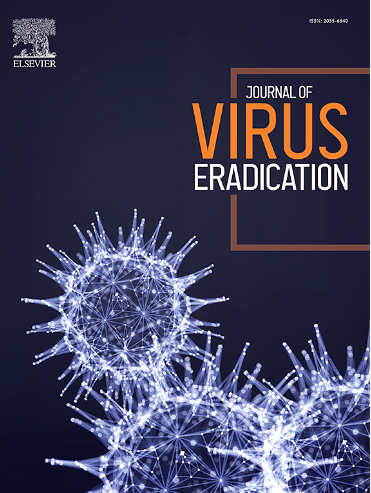Persistent cell-associated HIV-1 RNA in virally suppressed individuals on INSTI-based ART
IF 2
4区 医学
Q2 IMMUNOLOGY
引用次数: 0
Abstract
Integrase strand transfer inhibitors (INSTIs) are the cornerstone of modern antiretroviral therapy (ART), achieving durable plasma HIV-1 suppression in most people living with HIV (PLWH). Previous comparisons of INSTI- and non-INSTI-based regimens have largely focused on HIV reservoir proviral assessments— typically total HIV DNA —without assessing reservoir activity. In this first functional comparison, we measured cell-associated (CA) short HIV-1 RNA transcripts, a marker of active transcription, alongside HIV-1 DNA in white blood cells from 92 virally suppressed individuals on INSTI-based (n = 73) or non-INSTI-based (n = 19) ART. CA short RNA transcripts were detected in all participants and HIV-1 DNA in 99 %, despite undetectable plasma viremia in >93 %. Individuals with prior “blips” — defined as a maximum of two episodes with 20–200 copies/mL plasma HIV-1 RNA over more than two years — had significantly higher CA RNA and HIV DNA than non-blip participants, confirming our previous findings. However, reservoir size and transcriptional activity did not differ significantly between INSTI and non-INSTI groups. These findings indicate that while INSTIs effectively block new integration events, they do not suppress ongoing transcription from the latent reservoir. Therapeutic strategies directly targeting HIV transcription should therefore be prioritized in cure-oriented research for PLWH on long-term suppressive ART.
抗逆转录病毒治疗中病毒抑制个体的持久性细胞相关HIV-1 RNA
整合酶链转移抑制剂(intis)是现代抗逆转录病毒治疗(ART)的基石,在大多数HIV感染者(PLWH)中实现持久的血浆HIV-1抑制。以前对基于INSTI和非基于INSTI的方案的比较主要集中在HIV病毒库的预先评估上——通常是HIV病毒的总DNA——而没有评估病毒库的活性。在第一个功能比较中,我们测量了细胞相关(CA)短的HIV-1 RNA转录物(一种活性转录标记物)和HIV-1 DNA,这些转录物来自92个病毒抑制个体的白细胞,这些个体接受基于inist (n = 73)或非基于inist (n = 19)的抗逆转录病毒治疗。在所有参与者中检测到CA短RNA转录物,99%的参与者检测到HIV-1 DNA,尽管93%的参与者检测不到血浆病毒血症。先前有“突变”的个体(定义为两年以上最多两次出现20-200拷贝/mL血浆HIV-1 RNA)的CA RNA和HIV DNA明显高于无突变的参与者,证实了我们之前的发现。然而,储层大小和转录活性在INSTI组和非INSTI组之间没有显著差异。这些发现表明,尽管iniss有效地阻断了新的整合事件,但它们并不抑制潜伏库正在进行的转录。因此,在以治疗为导向的长期抑制性抗逆转录病毒治疗的PLWH研究中,应优先考虑直接针对HIV转录的治疗策略。
本文章由计算机程序翻译,如有差异,请以英文原文为准。
求助全文
约1分钟内获得全文
求助全文
来源期刊

Journal of Virus Eradication
Medicine-Public Health, Environmental and Occupational Health
CiteScore
6.10
自引率
1.80%
发文量
28
审稿时长
39 weeks
期刊介绍:
The Journal of Virus Eradication aims to provide a specialist, open-access forum to publish work in the rapidly developing field of virus eradication. The Journal covers all human viruses, in the context of new therapeutic strategies, as well as societal eradication of viral infections with preventive interventions.
The Journal is aimed at the international community involved in the prevention and management of viral infections. It provides an academic forum for the publication of original research into viral reservoirs, viral persistence and virus eradication and ultimately development of cures.
The Journal not only publishes original research, but provides an opportunity for opinions, reviews, case studies and comments on the published literature. It focusses on evidence-based medicine as the major thrust in the successful management of viral infections.The Journal encompasses virological, immunological, epidemiological, modelling, pharmacological, pre-clinical and in vitro, as well as clinical, data including but not limited to drugs, immunotherapy and gene therapy. It is an important source of information on the development of vaccine programs and preventative measures aimed at virus eradication.
 求助内容:
求助内容: 应助结果提醒方式:
应助结果提醒方式:


